The colorful region of Andalusia stretches across the south of Spain and boasts some of the country’s most visited and impressive sites, such as Granada’s majestic Alhambra and Cordoba’s Great Mosque. With this ultimate 5-day itinerary you will discover the essence of Southern Spain, a land famous for its awe-inspiring Islamic architecture, passionate flamenco music, delicious tapas, and long-standing bullfighting tradition.
Table of contents: ()
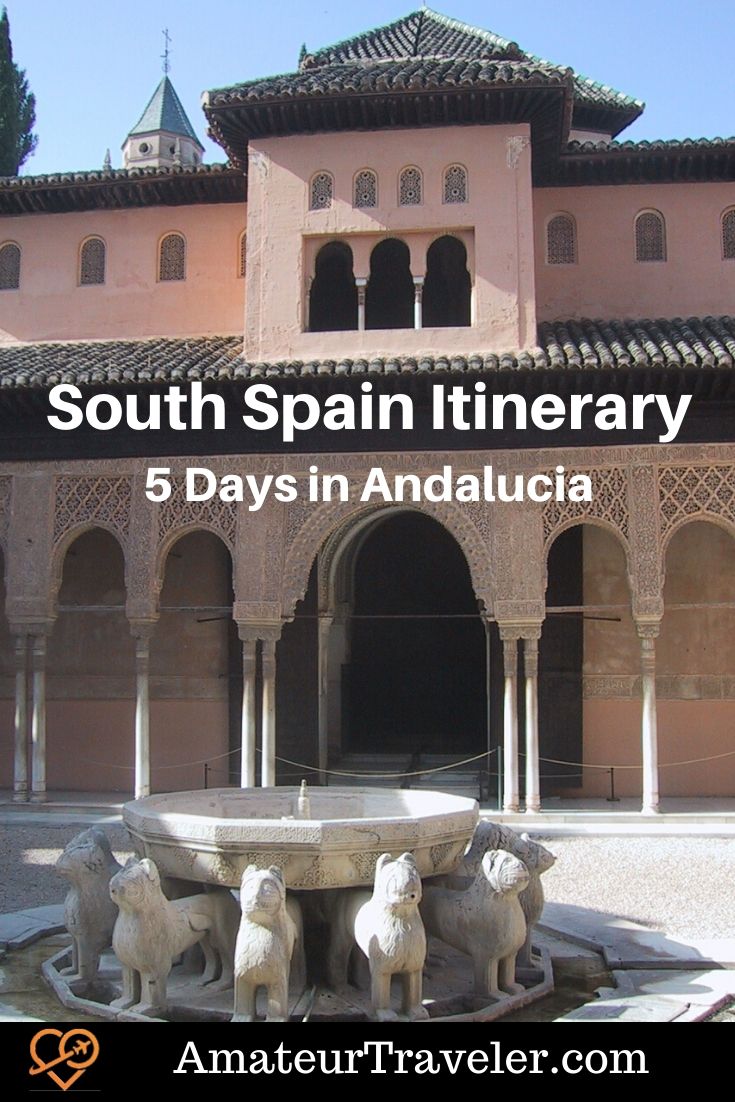
How many days in Southern Spain?
The truth is, you could easily spend 2 weeks in the region. This itinerary will mainly concentrate on cultural tourism, visiting the main sites in the largest cities. However, Southern Spain is also home to hundreds, if not thousands, of quaint white villages worth exploring with more time.
In addition, Andalusia stretches along 886 km (550 miles) of coast – from the renowned and often crowded Costa del Sol to the secluded undeveloped coves of the Cabo de Gata Nature Park.
Weather
With some of the best weather in Europe, Andalusia welcomes visitors all year round. While the winters are mild, the summers do get very hot. Temperatures often reach 40 ºC (104 ºF) in the interior. Therefore, if possible, avoid visiting the interior sites in July and August.
How to Travel
If you only have 5 days in Southern Spain, I would highly recommend renting a car. There are many international and local companies offering vehicles for hire at great rates.
However, if renting a car is not an option, the bus and train connections between the main Andalusian cities are pretty good. Although buses are generally cheaper, the high-speed trains are much faster (sometimes less than half the time!). You can book your train tickets directly with Renfe.
Day 1: Malaga
Arriving in Malaga
The city of Malaga is home to the 4th largest airport in Spain, making it the perfect starting point for this 5-day itinerary through Southern Spain. There are daily flights to 20 Spanish cities and over 100 international destinations (most of them in Europe).
For those traveling internationally and arriving in Madrid, it is also possible to get to Malaga from the Spanish capital using the high-speed train (2 h 30 min journey).
From Malaga’s airport, it is a 15-min drive to downtown. Street parking in Malaga’s center is virtually impossible and I highly recommend you to use a parking garage or even better, book a hotel with parking. Expect to pay around 20 to 25€/day for parking in the center.
Malaga’s historic center
The city of Malaga is considered the capital of the Costa del Sol. It’s home to beautiful sandy beaches that stretch from the historic center into the adjacent towns.
But with just one day to discover Malaga, I would recommend to forget the beaches and get straight into Malaga’s historic center, the heart of the city. Built mainly during the 19th century as the city entered the Industrial Revolution, Malaga’s elegant old town is centered around its most famous street, Calle Larios. Full of shops, bars, and restaurants, there is always a buzz in this wide pedestrian street. If you haven’t strolled down Calle Larios then you haven’t been to Malaga.
Also in the old town is Malaga’s cathedral, which the malagueños (Malaga locals) colloquially call “Manquita” (the one-arm lady) because it was never finished and, as a result, is still missing one of its two towers.
Alcazaba, Gibralfaro & Roman Theater
The city of Malaga is home to two important relics from Moorish times: the Alcazaba (fortress) and Gibralfaro castle. Although they are not the top Moorish sites in Andalusia, they do make a great introduction to the region. But since you only have one day in Malaga, I would recommend you to skip the Gibralfaro and just visit the Alcazaba.
Right next to the Alcazaba’s entrance, stands an even older site, Malaga’s Roman Amphitheater. Originally built in the 1st century, it was buried and hidden underground until its rediscovery in 1951.
Picasso & Malaga’s Art Scene
Pablo Picasso was born in Malaga in 1881 and the city has honored him with two museums: Picasso Museum and Picasso’s Birthplace Museum.
But Malaga’s art scene doesn’t end there. There is also the Thyssen Museum (19th-century Spanish art), the Pompidou Center (20th and 21st-century impressionist art), and the Contemporary Art Center, among others.
If you only visit one art museum while in Malaga, it should be the Picasso Museum.
Day 2: Malaga – Ronda – Sevilla
Drive Malaga – Ronda
On the second day in Southern Spain, the trip continues to the white town of Ronda. The drive through the beautiful interior of the province of Malaga takes about 1 h 30 min.
Ronda is a town of 34,000 inhabitants and it’s usually possible to park for free in the streets of the new part of town. However, should the need arise, there are also several parking garages.
Ronda & its New Bridge
Ronda is famous for its grandiose New Bridge that spans across the steep Tajo gorge, joining the new and old part of the town. This massive construction took almost 40 years to be built. It had to prove strong enough as the previous bridge had collapsed only 6 years after its construction killing 50 people. But this time the rondeños (Ronda locals) definitely got it right. The bridge that we see today was inaugurated in 1793.
Ronda’s New Bridge can be admired from several lookout points such as the walkway around the Hotel Parador de Ronda (which is the closest hotel to the bridge and the old City Hall), the Aldehuela lookout, and the Cuenca Gardens.
However, Ronda’s charm goes far beyond the New Bridge. Its unique location at the top of the gorge makes for incredible views all around. Also, make sure not to leave Ronda without wandering around its old town, all the way down to the Almocabar gate.
If you are interested in the history of bullfighting, then a visit to Ronda’s bullring is also a must. Modern bullfighting was born here and its origins are interestingly entangled with Spanish and European history.
Drive Ronda – Sevilla
After this short stop in Ronda, the trip continues to Seville. The drive from Ronda to Seville takes approximately 1 h 45 min.
The first stretch of the trip runs along the border of the Sierra de Grazalema Nature Park, an area famous for its quaint white hillside villages. If you have the time, the towns of Grazalema and Zahara de la Sierra are worth a stop.
Editor: One of my favorite towns in Los Peublos Blancos is Arcos de la Frontera.
Once in Seville, make sure to avoid getting in the city center with a car since the old streets can get very, very narrow and some areas have restricted access. Street parking is pretty much impossible but there are many parking garages in the area and prices range from 20 to 25 €/day.
Although this is the largest city of this itinerary, once you are in the center all of the main points of interest are easily reachable on foot. Moreover, one of the main things to do in Seville is to get lost in its vibrant city center.
Day 3: Seville
Sevilla tiene duende – Seville has soul
Although you could spend 2-3 days in each of the cities of this itinerary, in Seville you could easily spend a week or more. Apart from its most famous tourist sites, Seville is a cosmopolitan city full of color and Andalusian character. It boasts a long list of museums, historical palaces, and churches worth visiting. Also, as I already mentioned, just getting lost wandering through Seville’s streets is a pleasure, admiring the beauty and charm of its hidden corners.
After all, there is a reason they say “Sevilla tiene duende” (Seville has soul).
Real Alcazar, Cathedral and Archivo de Indias
Without a doubt, if you could only visit one landmark in the city, it should be the Real (Royal) Alcazar.
Surrounded by Muslim fortifications from the 10th – 12th centuries, this palatial complex contains a unique mixture of Islamic, Mudéjar, Gothic, and Renaissance architectural styles. In addition, these gorgeous palaces are surrounded by the spectacular Murillo Gardens.
Right next to the Alcazar stands Seville’s colossal gothic cathedral, which is actually the world’s largest gothic building. Interestingly enough, it also houses the tomb of Cristopher Columbus. The cathedral occupies the same space where Seville’s Great Mosque used to be. Today, the original minaret has been remade into the cathedral’s bell tower. The tower is wide enough that it has a ramp that leads to the top so that one could ride their horse to the top to sound the call to prayer. Known as the “Giralda,” it has become a symbol of the city. An entrance ticket to the cathedral includes access to the top of the tower.
Santa Cruz neighborhood
Adjacent to the Alcazar and the cathedral is the old Jewish neighborhood of Santa Cruz. This is one of the most charming and quaint quarters of Seville. Although quite touristy, it is still a beautiful area to wander around, discovering beautiful alleyways and small squares full of orange trees.
Plaza de España
Despite being a bit out of the way (15 – 20 min walk from Seville’s center), the monumental Plaza de España also deserves a visit. Occupying an incredible 12 acres (the size of 8 football fields!), this massive square is presided over by a very characteristic red-brick building. The mixture of Renaissance and Neo-Moorish styles give the square a very particular Sevillian style.
If this place looks familiar to you, it may be because you have seen it in movies such as Star Wars (Attack of the Clones) or The Dictator from Sacha Baron Cohen.
Day 4: Seville – Cordoba
Drive Seville – Cordoba
To travel between Seville and Cordoba, the high-speed train is the fastest option. If you drive, the trip will take over 1 h 30 min, but if you take the train you can make it in half the time.
As with Seville, Cordoba’s very center (especially the Jewish neighborhood) is made up of very narrow streets with access restrictions. Street parking in the center is very difficult to come by and again using a parking garage is recommended. Expect to pay 15 – 20 €/day.
- Get a Car Rental
- Book Your Accommodation HERE
- Get an eSim to be able to use your smartphone abroad.
- Search for Great Tours HERE
- Get a universal plug adapter
- Buy Travel Insurance
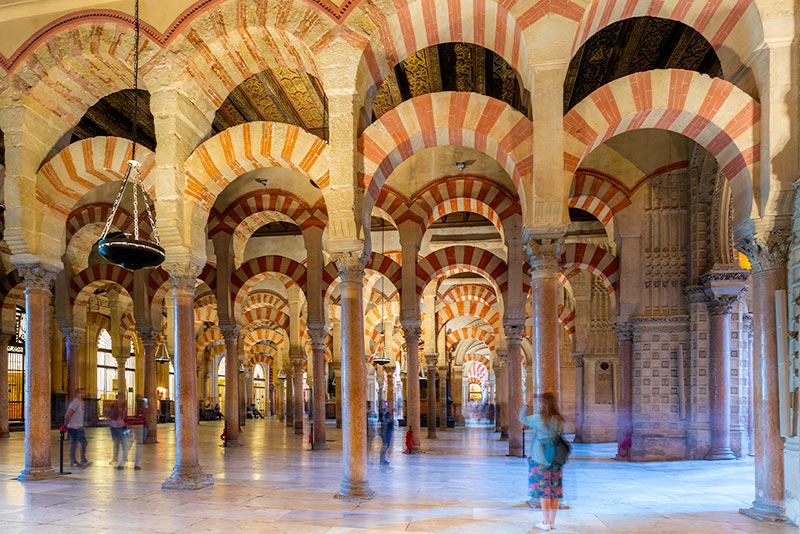
Cordoba & its Great Mosque
Although Moorish mosques were generally torn down by the Christians after the Reconquest, Cordoba’s Great Mosque (la Mezquita) was lucky not to suffer the same fate. But it wasn’t just luck, the mosque’s beauty convinced them to save it. To this day Cordoba’s Great Mosque is considered one of the world’s greatest works of Islamic architecture.
When the Christians reconquered the city, they were so impressed that they decided to keep it and build a Catholic cathedral in its center. This sounds strange but wait util you see it in person – it’s truly bizarre. However, this wall-less Catholic cathedral rising in the center of the Mosque is what makes this site truly unique.
If you look closely you will see that the columns of la Mezquita are of different heights and styles. Many of these pillars came from older buildings including Roman temples that were originally on this site.
Jewish neighborhood & Patios
Next to the Great Mosque is the old Jewish neighborhood of Cordoba. Made up of narrow cobblestone streets lined with whitewashed houses, this is another must-wander area. Also, make sure not to miss the synagogue and the Mudéjar chapel of San Bartolome.
While wandering around, you will have the opportunity to peak into some manicured patios, for which Cordoba is famous. Locals actually compete every year for the prize of having the most beautiful patio. An array of colorful flower pots adorn the walls, floors, and staircases of these traditional courtyards.
Day 5: Cordoba – Granada
Drive Cordoba – Granada
The last day of the road trip continues from Cordoba to Granada in approximately 2 h 20 min by car. Once again, the high-speed train halves that time.
Granada’s Albaicin neighborhood is particularly tricky for driving (narrow streets, access restrictions, etc.) and should be avoided at all costs. The rest of Granada’s center is not that bad and there are several parking garages in the area. The price for parking is around 20 €/day.
Granada’s Alhambra
Although Seville’s Real Alcazar and Cordoba’s Great Mosque are impressive sites, the best has been saved for last – Granada’s majestic Alhambra.
What started off as a Moorish fortress (Alcazaba) in the 9th century, later became the crown jewel of the Emirate of Granada (Nasrid dynasty) during the 13th and 14th centuries. Although there are also palaces from Catholic kings and a church within the complex, the crème de la crème of the Alhambra is the Moorish Nasrid Palaces.
Plan at least 3 hours to visit the Alhambra comfortably since it is a very large site with a lot of history. More importantly, make sure to book your Alhambra ticket well in advance since the number of visitors per day is limited.
Albaicin neighborhood
For the rest of the afternoon, explore Granada’s Moorish quarter, the Albaicin neighborhood, which stretches along the hillside opposite from the Alhambra.
Walk along its narrow labyrinthine streets and make sure to get to the San Nicolas lookout point, which offers some amazing views of the Alhambra. Sunset is probably the best time, but it’s also when it gets more crowded.
Flamenco in a Sacromonte cave
Granada’s Sacromonte neighborhood was created by the gypsy community that settled in the area after the Christian Reconquest. The gypsies dug caves into the hillside, which are still used as houses to this day.
The Sacromonte gypsies are also famous for their flamenco traditions and several caves put on flamenco shows daily. Although you can see flamenco in pretty much any Andalusian city, the Sacromonte caves offer one of the most authentic and intimate experiences.
Podcasts
For more information about Andalucia listen to Travel to Seville, Spain – Amateur Traveler Episode 451 and Travel to Andalucia, Spain – Amateur Traveler Episode 389
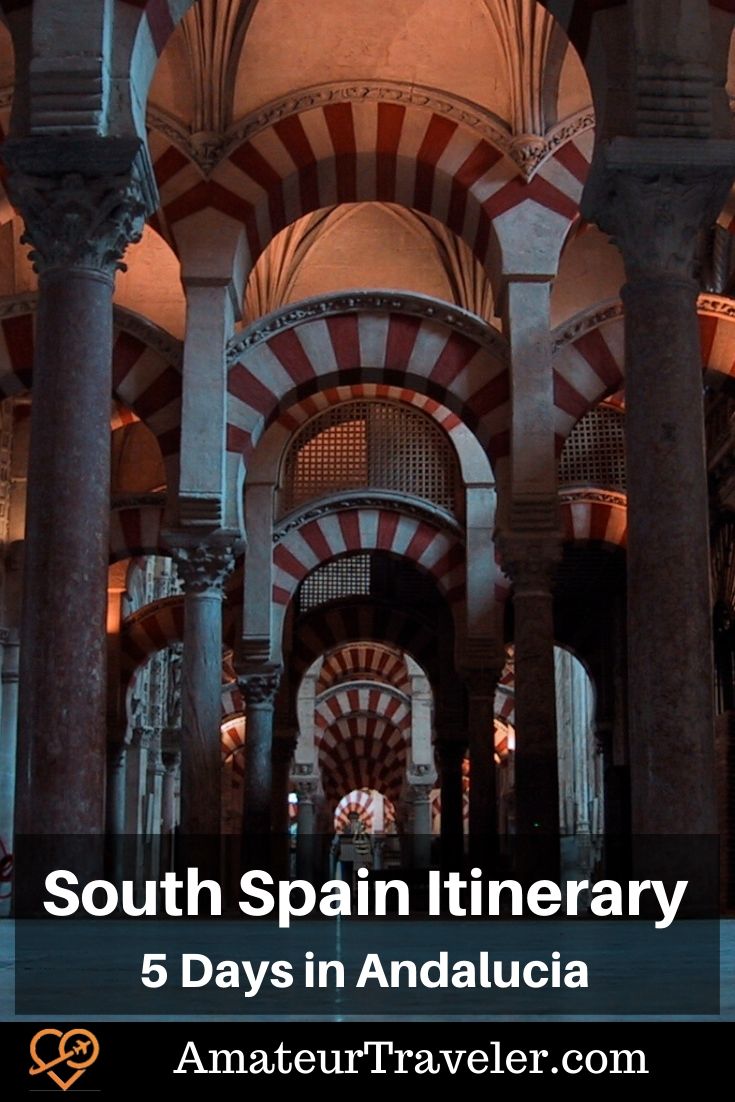
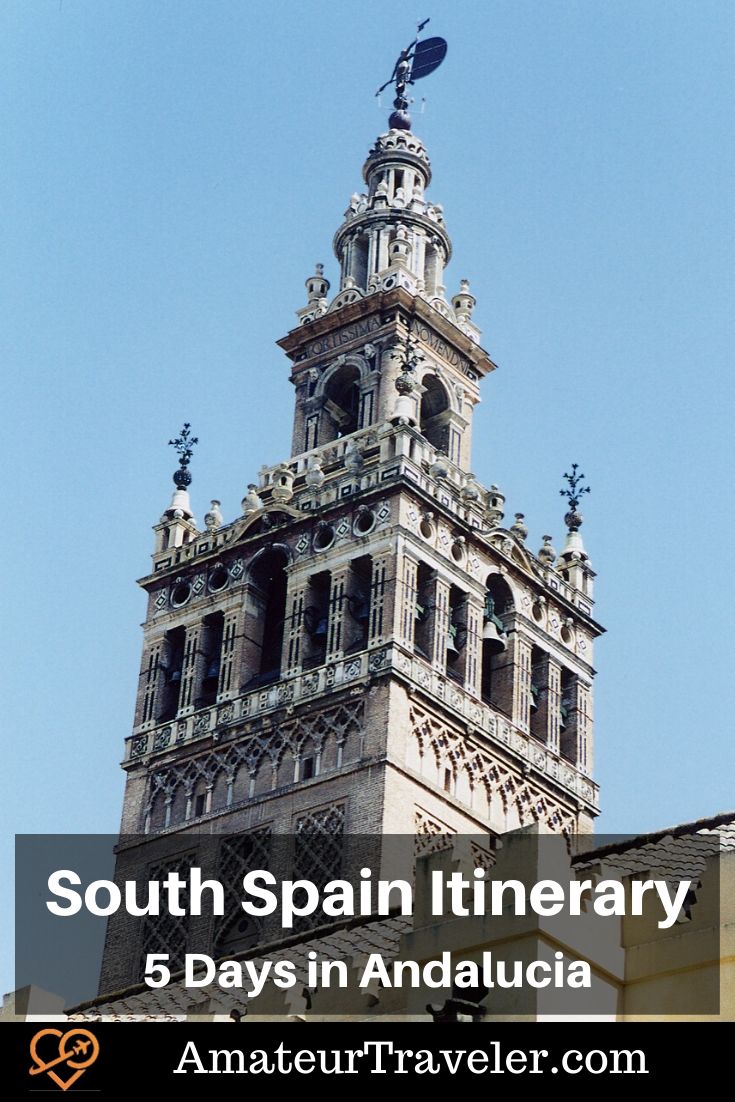
Leave a Reply
Tags: andalucia, article, cordoba, grenada, malaga, ronda, seville, spain





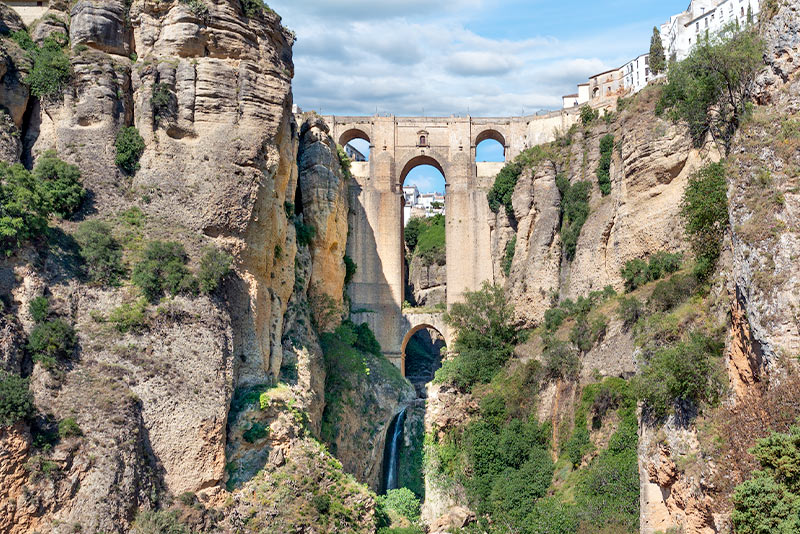






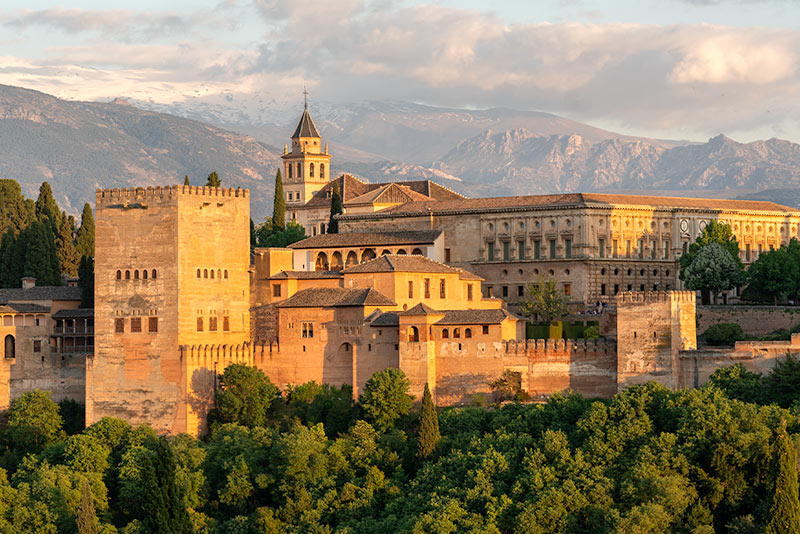

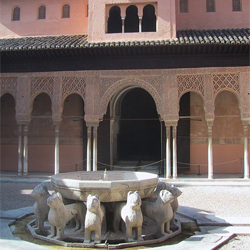 Travel to Andalucia, Spain – Episode 389
Travel to Andalucia, Spain – Episode 389 The Best Things to do in Ronda Spain
The Best Things to do in Ronda Spain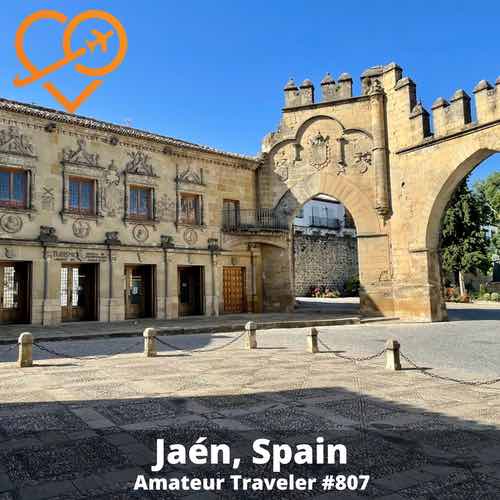 Travel to the Jaén province of Andalucia, Spain – Episode 807
Travel to the Jaén province of Andalucia, Spain – Episode 807 36 Hours in Granada, Spain
36 Hours in Granada, Spain
